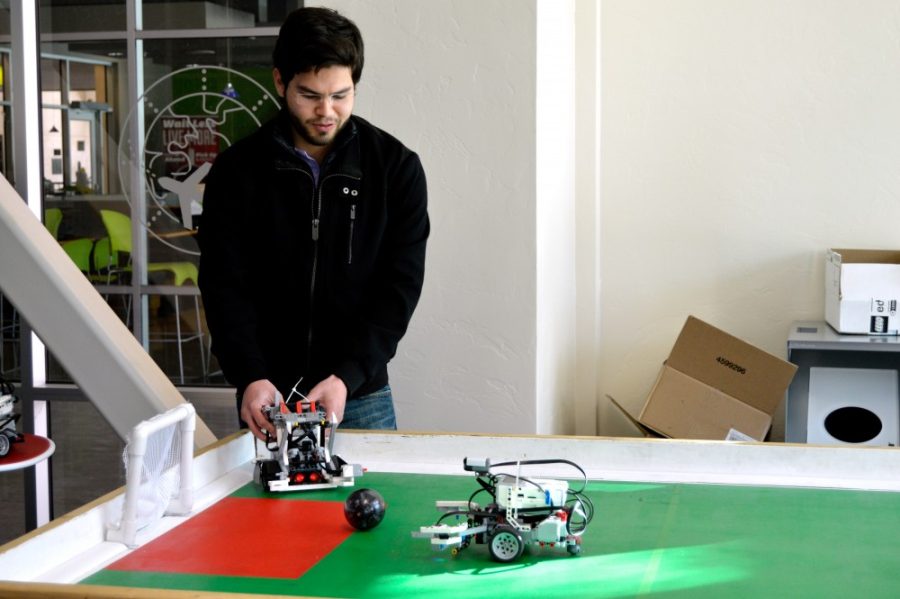Exemplifying the “E” in STEM, Dr. Ricardo Valerdi, a UA professor in the department of systems and industrial engineering, has brought a new, hands-on way to encourage science, technology, engineering and math in classrooms across Tucson.
Through the RoboCup Junior STEM program, students at three middle schools in the Sunnyside School District will have the chance to build and program their own soccer-playing robots. Ultimately, they will use these robots to compete in the RoboCup Junior Tournament at the Children’s Museum Tucson on June 30.
A training session for the teachers was held by Valerdi and two of his teaching assistants for the program—Matt Kelpien, a systems engineering senior and Heriberto Bujanda, an industrial engineering senior—on Jan. 16.
The teachers learned basic rules and components necessary to succeed in the tournament and were provided with a curriculum to supplement the design and testing process.
Each middle school competing will purchase two robots and work to program and build an exemplary goal-scoring and goal-defending robot using a LEGO Mindstorms EV3 kit.
The robots are autonomous—not controlled by a remote—and are able to play soccer using sensors and programmed codes which are uploaded to the robot.
The tournament uses an infrared soccer ball that the robots can detect using infrared sensor on their bodies. They can use the intensity of the light to determine how far away the soccer ball is and then adjust to grab the ball and score.
Competition is held on a color-coded field to help increase the perceptibility for the robots. The playing field itself is green, out-of-bounds areas are white and the goals are painted two opposing colors. Similar to the infrared sensors, the robots are equipped with color sensors, which alert it to back up onto the playing field when it senses white, or shoot the ball when it senses the color of a goal box.
“[The robots] don’t actually know which goal is theirs,” Bujanda said. “If they can recognize the color, that’s the way they can know: ‘Red is mine or blue is the opponent’s goal.’”
The RoboCup Junior program is part of the Science of Sport program, which was also created by Valerdi in partnership with the Arizona Diamondbacks. Science of Sport first focused on baseball, and then expanded into soccer, with the goal of teaching STEM concept through sports.
“We want students to expand their dreams and look at a STEM career,” said Ballard Smith, the executive director of Science of Sport.
Over the course of the next semester, the schools will build, program and test their robots, trying to find the best mix of speed, size, appearance and programming. Students are only able to use the things provided to them in the LEGO kits.
“If it was remote-controlled it would be easy,” Valerdi said. “You have to put enough intelligence into the robot.”
At the tournament, the matches will be one-on-one and will last five minutes. Just like in regular soccer, there are penalties including penalty kicks if there is a tie at the end of regular play; however, there are no time-outs.
“The exciting thing is, there’s not one way to do it, so it can actually be a competition,” Bujanda said.
Come June, there will be at least six newly designed and programmed robots accompanied by eager middle school students ready to compete for the ultimate prize: a trophy featuring a soccer player with a soccer ball for a head. This will be small reward for being the winners of the RoboCup Junior Tournament compared to the invaluable knowledge they will gain along the way.
Follow Natalie Robbins on Twitter.









